Berg Socket-Ferrule Chisels
I first saw this style of Berg chisel in early 2015. It took me a short while to recognize that there was something different about it. The unusual feature is that it appears to be a socket with a ferrule.
I have not seen this chisel in a Berg catalog yet. Although I have seen a few close up, they seem to be quite scarce. Most of the ones I’ve seen so far have come from Canada, although I have seen one from the U.S.
As the photos below show, this type of chisel came in both the regular cabinet chisel size and the butt chisel size. The handles are made from fairly plain birch rather than the highly figured masur (curly) birch. These handles are finished with shellac, although I have seen one that was factory finished with a varnish that has a plastic feel to it.
The handles have dimpled steel hoops and a nice black finish that looks similar to “bluing” rather than paint. The handle labels are the typical blue and gold transfer decals. They are a bit on the muddy side as is common with more modern Berg decals.
The base of the handles have brass ferrules with medium to coarse vertical knurling.
The chisels’ model numbers are stamped on the front of the blades, as are their width in inches. It’s likely that these chisels were made prior to those Berg chisels that have with stamped in both inches and millimeters.
The back of the blades show the typical modern Berg shark logo and lettering.
Here is a group of four chisels with the socket and ferrule feature – two are regular cabinet chisels and two are butt chisels. They all share identical attributes. Based on the blade stamps, decals, handles, and ferrules that I’ve seen, I would estimate that these were made in the late 1950s or early 1960s. I’ve been wondering if these were made some time after Bahco bought out Berg in 1959.
Note the nice snug fit of the ferrules around the sockets.
These chisels use the standard Berg numbering convention. The longer cabinet chisels are stamped “1026” and the butt chisels are stamped “1027”. The Berg catalogs typically refer to 1026 and 1027 chisels as “Socket Firmer Chisels”. Note that the brass ferrules all have two rows of vertical knurling, although the coarseness of the knurling varies slightly from chisel to chisel.
Time to carefully pull a chisel apart and see how it’s made. Hey! I see a tang.
That tang was stuffed in pretty tight, but I was able to finally get it off without any damage.
The fit and finish looks good everywhere.
The tang is quite beefy. It’s square at the base and does not begin to taper until it’s about 3/4 of the way up to the top.
The top of the socket is nice and flat. That’s essential for good contact with the bottom of the handle.
I really like this chisel blade design. There is nothing cheap about it, plus it’s sturdy and attractive. I’ve seen it on a few other brands of chisels. Most of them were very good quality.
It turns out that this really isn’t a socket chisel, but a tanged one … and a nice one at that. I think that fellow Swedish chisel enthusiast, Russ S, may have forseen this in an earlier discussion when he wrote:
“I’ve also seen four of these since October 2012.
I have a red-handled version, as well. It’s marked E.A. Berg on the blade and ‘1026’ on the handle. It has a socket that extends up into the plastic. At least on the outside it looks like a socket. But it may be just a socket shape but solid with a tang at the end, a form used by Bahco and other modern chisel makers. I can’t see if there’s a rim on the socket. It’s either buried in the plastic (which seems impossible) or doesn’t exist.”
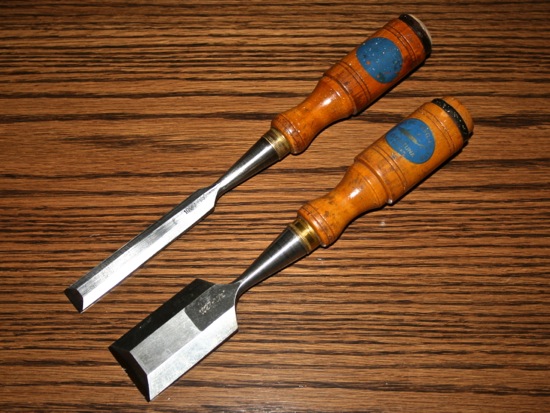
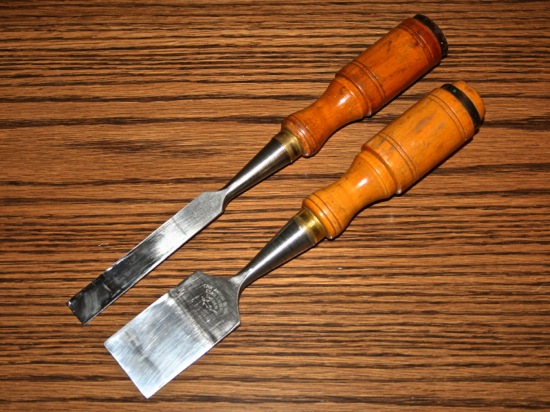
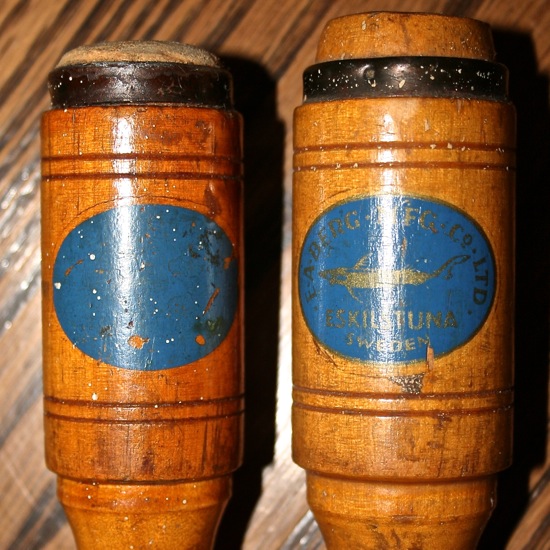
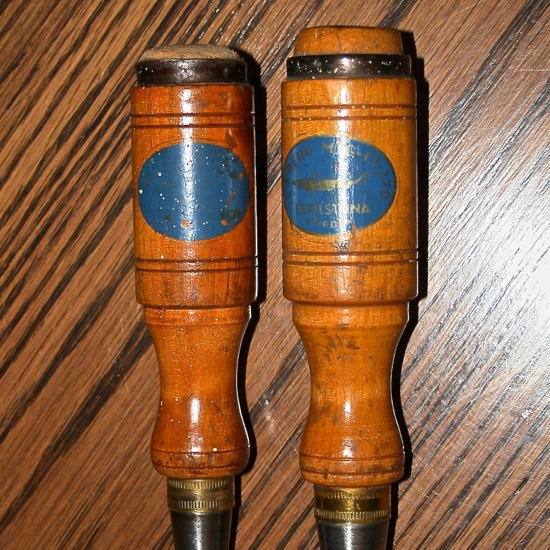
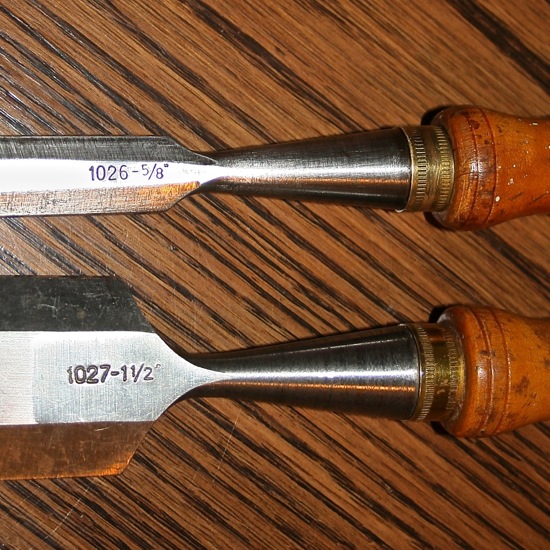
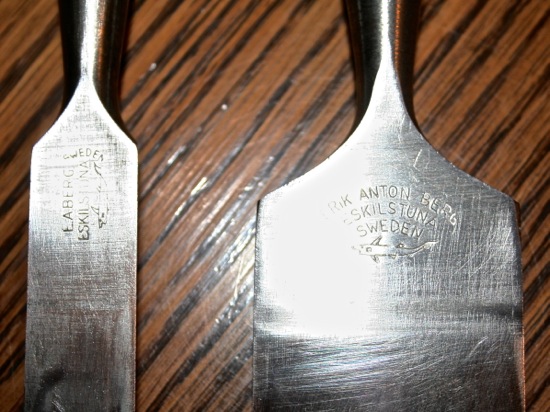
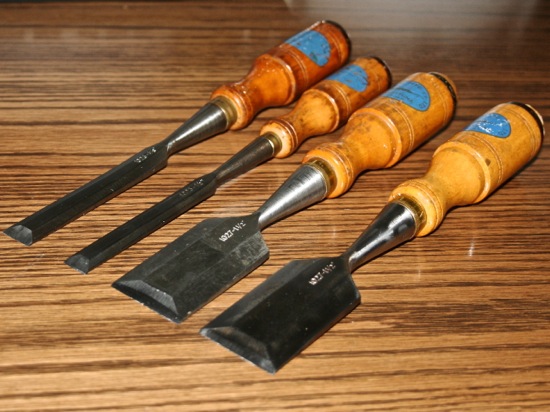
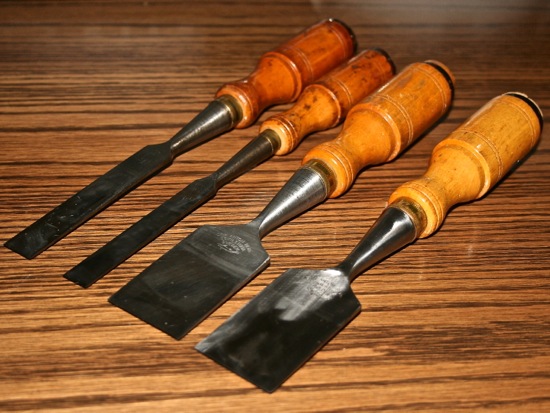
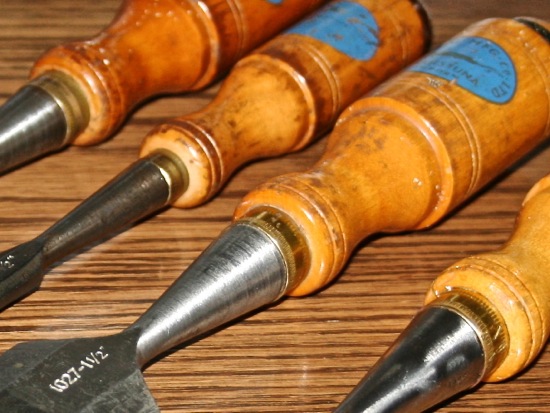
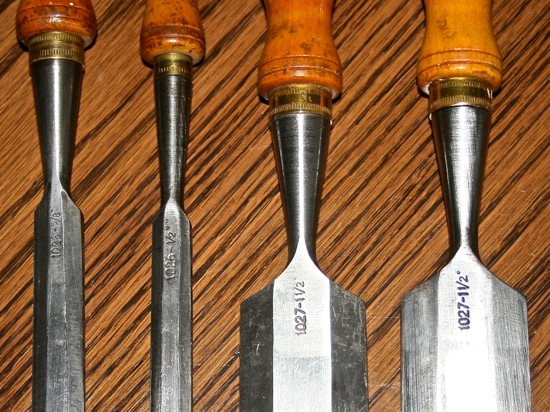
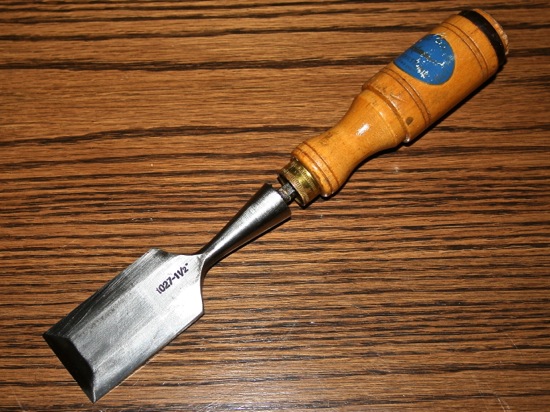
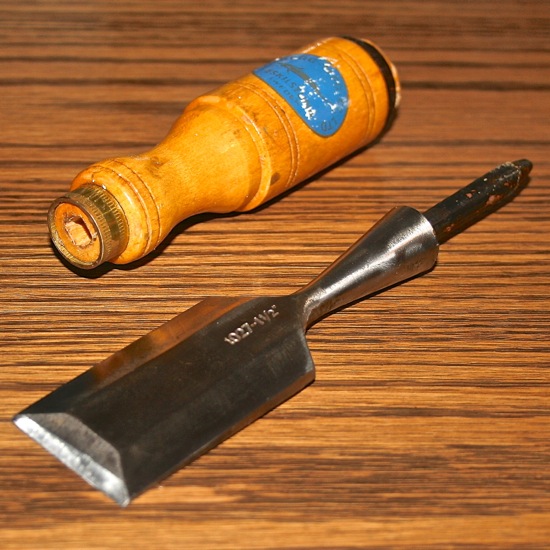

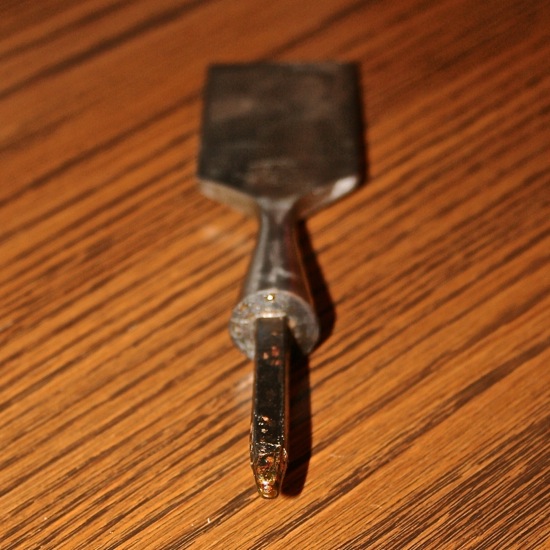
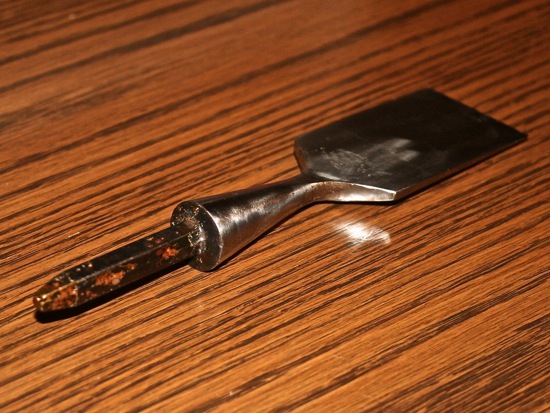
The square, un-tapered tang is a sure sign of a very late Berg production tool. These were probably done as “fancy”, but still cheaper alternative to the plastic handled chisels. The cone shaped neck on the chisel would be easier to machine than the traditional flared shoulder and neck chisel design. Notice how the ferrules are marked with course vertical knurling, unlike the typical finer slanted knurling that both Berg and Jernbolaget had always used before. These ferrules look cheap, more like the typical Solliden style. Interesting that this style has never been seen in a Berg or Bacho catalog. A real rarity- shall we say an odd fish?
Yes. These are odd fish indeed.
I have a couple of fleamarket find “Footprint” chisels like that, 1/4″ and 1/2″ The Footprint is stamped and marked in red on the handle. The handle is fat like a 1 1/2″ Berg. Beech.
I forgot to add that the handles are very Swedish.
Maybe they switched tang production to this form entirely, but a few people still wanted a wooden handle. So this was a way to do sell it.
These pop up every now and then in Sweden, so they’re not rare but uncommon. I see Bahco still uses this tang form on 1031s made today, not made in Sweden of course 🙁